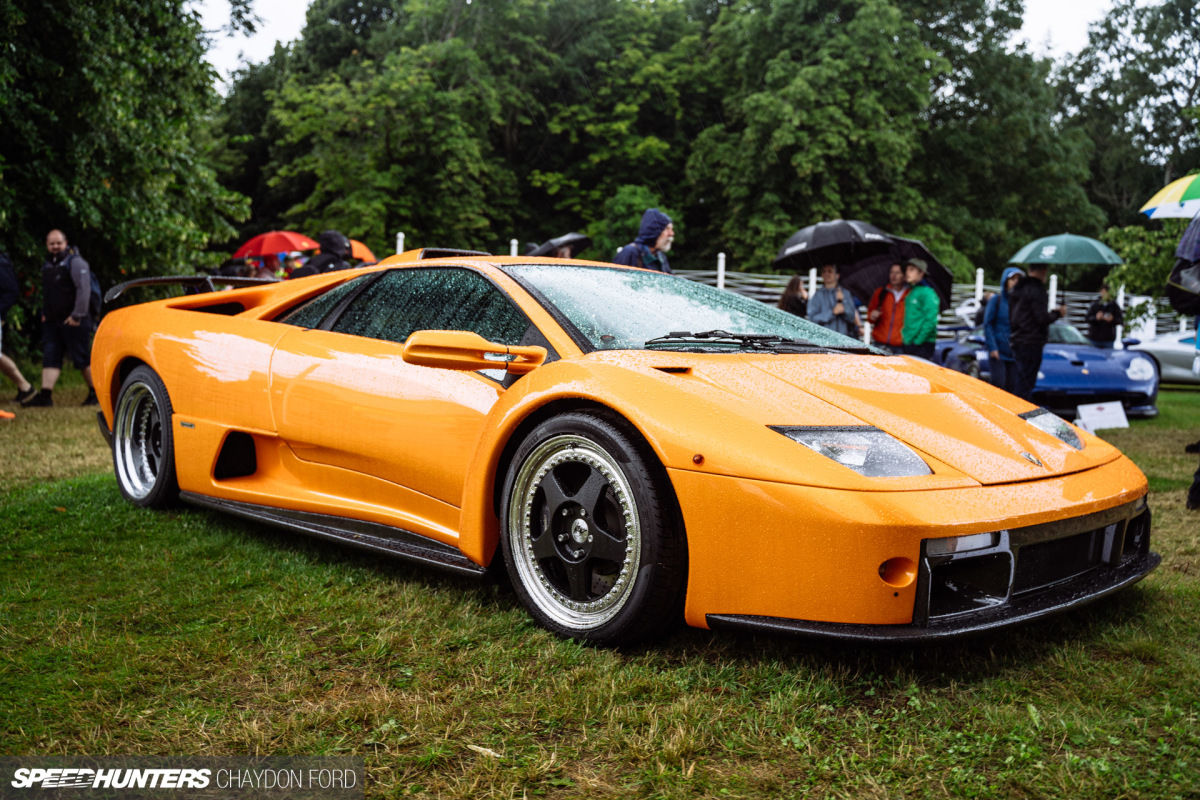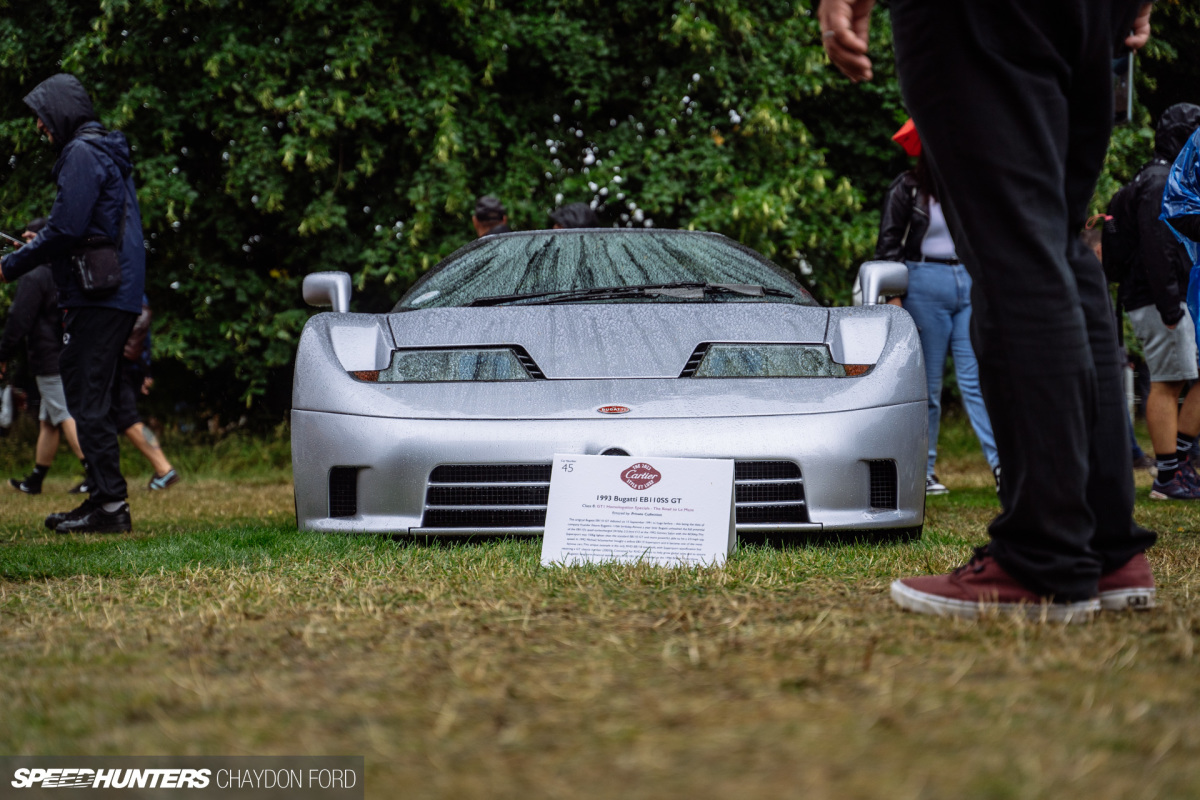The late 1990s saw a shift in top tier production sports car based racing with the organising bodies wanting to try and escape skyrocketing costs. Ultimately, the collapse of the FIA World Sportscar Racing Championship saw the formation of Group GT, more commonly known as GT1.
Initially, this racing series was designed for privateer entries, but towards the end manufacturers made little effort to mask their support for these teams and thinly-veiled works entries found their way into the series.

Some of these cars started as road cars, then became race cars, such as the Lamborghini Diablo GT, Bugatti EB11o and McLaren F1. Others were designed as race cars from the outset with minimal changes to gain a set of licence plates. At this year’s Goodwood Festival of Speed, the Cartier Style et Luxe Lawn played host to a curated display of GT1 machinery.

Gordon Murray designed the McLaren F1 as a road car first and foremost. Such was Murray’s obsessive nature that individual grams were being saved with each component, which no doubt contributed to the car’s ability to reach 240mph (386km/h) – top speed record for a naturally aspirated production car that still stands today.
Being such a capable road car naturally meant race teams were eager to prove the McLaren’s worth, and the F1 entered the GT1 fold in 1995. This proved to be a wise move, as the car claimed 1st, 3rd, 4th, 5th and 13th in the 24 Hours of Le Mans race that year.



The Lamborghini Diablo GT is one of the lesser known cars in this GT1 group, and while it may look relatively sedate (imagine calling a Diablo sedate…) compared to the others, it did receive a host of upgrades over the ‘normal’ Diablo. Wider front arches were fitted to cope with a wider front track, and the bodywork was mostly carbon fibre, save for the the roof and doors. The engine was also bored out to 6.0-litres, boosting power to 575hp.


Of the 139 Bugatti EB110s manufactured, only one ever competed at Le Mans. Qualifying 5th in class (17th overall), the car was competitive during the race until it wasn’t; a gearbox failure sadly ended any chances of a podium. The EB110s were a technological marvel of the time, featuring a quad-turbocharged and 12-throttle-body-equipped V12 engine transmitting power through all four wheels.





The fact the Nissan R390 bears more than a striking resemblance to numerous other Le Mans racers is no coincidence – Tom Walkinshaw Racing (TWR) was entrusted to develop the car, following their success with the Jaguar XJR-9. The R390 even has the same cockpit as the XJR-15, albeit with some minor alterations.

This specific R390 holds the accolade of being the only ex-Le Mans car to be registered and made road legal. While there are other cars, such as the Group C Porsche 962 which have been road-converted, they didn’t race at Le Mans.


The Porsche 911 GT1 is where things started to get out of hand. Only the front and rear lights were shared with a regular 911 (which was 1/10th the cost). The motor and rear sub-assembly were taken from the 962C, while the front end was based on the 993. Despite being down on power due to the balance-of-performance restrictions placed on turbocharged cars in the GT1 class, the Porsche was victorious at the 1998 Le Mans 24 Hour. Reliability proved to be the 911 GT1’s saving grace as the Toyota, Mercedes-Benz and BMW entries all retired with issues. A win is a win though, and it gave Porsche its 16th overall 1st place at Le Mans.


When Mercedes-Benz saw the success the Porsche team was having in endurance racing, they developed the CLK GTR in a record time of just 128 days. Much like the 911, only the lights were shared with the regular CLK.
The GTR didn’t compete at Le Mans and instead cleaned house in the shorter endurance races. The CLK GTR LM, an evolution of the design, did enter Le Mans, but lost the sonorous V12 motor for a V8 in the process.

Of all the cars on the Cartier Lawn at Goodwood House this year, the CLK GTR is arguably the most successful. Over two years and 22 races, the Mercedes-Benz won the drivers and constructors championships twice with 17 wins.

This success came at a price and ultimately proved the downfall of the GT1 category. Competitors slowly withdrew, until there was only the CLK GTR remaining in the class. A restructure was in order, and with the GT2 class being uplifted, the golden era of GT1 cars came to an end.

The demise of a homologation requirement for GT racing means we no longer see road-going versions of race cars, but maybe it’s time for all the supercar manufacturers to stop just creating track day specials and start putting race numbers on the doors. Now there’s a thought…
Chaydon Ford
Instagram: chaycore




















